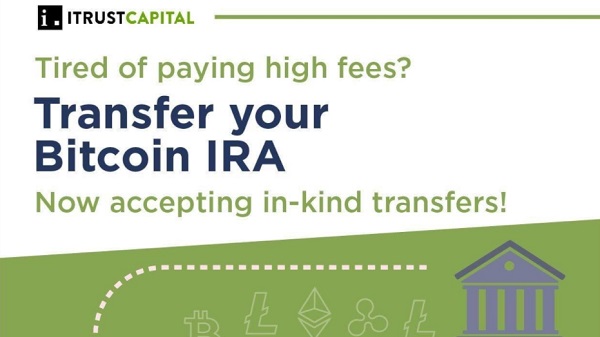
An often overlooked aspect of the cryptocurrency market’s reputation for volatility is the effect sudden market changes can have on the mental health of traders and investors.
Addiction to day trading, or pathological trading, is already well-known among stocks and commodities traders and has been extensively documented by medical professionals. There are even rehab programs devoted to treating day-trading addiction.
With its possibility of “life-changing” money for those lucky or savvy enough to catch it, the crypto market has generated its fair share of trading addicts.
To get a better understanding of the mechanics of cryptocurrency trading addiction and how to recognize it, Magazine sat down with Tony Marini, senior specialist therapist at Castle Craig Rehab in Scotland, and Aaron Sternlicht, co-founder of New York-based private practice Family Addiction Specialist.
What is cryptocurrency trading addiction?
Sternlicht defines cryptocurrency trading addiction as the “persistent or recurrent pathological compulsion and obsession to engage in the behavior of investing in or trading cryptocurrencies despite negative consequences to personal and/or professional areas such as financial loss, disruption to relationships, career problems, mental health issues, and other such negative consequences.”
He believes that addictive behavior goes well beyond just buying and selling tokens. When a trader’s time is fully consumed with chart analysis, market research, data review, fundamental analysis or investor sentiment, there may be a problem.
It’s all about neurotransmitters
The body makes a neurotransmitter called dopamine that the nervous system uses to deliver messages between nerve cells. Sternlicht says that when the price of crypto goes up and someone completes a successful trade, they receive a rush of dopamine, bringing about a feeling of pleasure.
“The volatility of cryptocurrency coupled with the fact that it can be traded 24/7 can result in excessive and regular boosts of dopamine that make it much more addictive than trading other assets such as stocks,” Sternlicht says. Over time, those who develop an addiction to cryptocurrency trading come to depend on it to bring on excitement and feelings of pleasure.
Sternlicht says some stimuli that release excessive amounts of dopamine — such as sex, drugs, video games and social media — are more likely to become addictive. He believes that due to volatile price fluctuations, successful cryptocurrency trades fall into that category.
On the flip side, other natural pleasures like eating a great meal or watching a beautiful sunset can become less stimulating and less appealing. “The individual becomes preoccupied with their stimuli of choice while losing interest in other life experiences that they used to find enjoyable, as it is the brain’s natural inclination to seek out pleasure,” Sternlicht says.
Marini points out that not everyone will become a compulsive gambler, a cocaine addict, an alcoholic or a crypto trading addict. But he believes that 3% of Brits are compulsive gamblers. The UK Health Security Agency (formally Public Health England) has estimated that about 2.2 million adults are problem gamblers or are at risk of addiction. Both Marini and Sternlicht agree that cryptocurrency addiction is very similar to gambling addiction and is treated as such.
With 33% of the country participating in the cryptocurrency market, Marini worries that he’s just seeing the tip of the iceberg. “I was finding there were more and more people coming through the doors that had been really drawn into cryptocurrencies,” Marini says.
Since 2016, Castle Craig has had over 200 clients come in with cryptocurrency trading addiction. Marini believes cryptocurrency draws people in much quicker than gambling because of its volatility. “They were looking at the pricing constantly because it fluctuates all the time. And with over 20,000 different cryptocurrencies now, they’re spending so much time on different media sites watching the cryptocurrencies, and that is becoming a problem in their life,” Marini says.
Still, according to Sternlicht, most people can trade crypto without worrying. “Although most individuals can invest in and trade cryptocurrencies without developing a pathological issue, some individuals develop pervasive impairment related to their trading behavior that results in addiction,” Sternlicht says.
Who is at risk?
Although there is no way to determine precisely who will develop an addiction to cryptocurrency trading, Sternlicht believes that those with frequent exposure to crypto, those who have experienced other addictions, or those who have had problematic gambling experiences are more susceptible. Family history of addiction, underlying mental health issues, impulsivity or risk-taking personality traits may trigger addictive behavior in traders.
In Sternlicht’s experience, crypto traders are frequently well-educated and financially savvy. They feel like they have a market edge and know something others don’t. “For example, they may spend extensive time researching the fundamentals of a particular project, or they may be highly skilled at analyzing charts, macroeconomics, market sentiment and other speculative measures. This is what is known as the ‘illusion of control.’”
Read also
Features
Open Source or Free for All? The Ethics of Decentralized Blockchain Development
Features
Billions and Billions: How Brands Take Blockchain From Niche to Normal
In a 2014 study, researchers from the Universidad de Deusto and University College London stated that “the illusion of control consists of overestimating the influence that our behavior exerts over uncontrollable outcomes.” According to Sternlicht, that false sense of security can encourage traders to take more risks and trade more frequently. If traders feel they have an edge, they may be more likely to place risker or larger trades and develop an addiction to trading.
Marini created the “Crypto Curve,” a diagram that maps out the life cycle of these types of risky behaviors. Not to be confused with the well-known “crypto J-curve,” which models the market value of a cryptocurrency over time, Marini’s Crypto Curve visualizes the evolution of addictive trading from “highly fulfilling” and “desperation” to “realization,” “recovery” and “growth.”

How do you know if you have a problem?
According to Sternlicht, some signs to look for include unsuccessful attempts to stop or moderate trading, thinking about crypto when not trading, associated feelings of guilt and shame, and hiding losses from loved ones. Lying, stealing, selling things or borrowing to continue to trade are also red flags.
One client of Marini’s worked for a financial company and embezzled $1.5 million in Bitcoin. He then lost $1.2 million of the stolen funds. Another client who came to Castle Craig for substance abuse and was able to abstain subsequently earned half a million euros trading cryptocurrency. Two years later, the client returned to the clinic, having relapsed with drugs and alcohol and lost all their crypto.
Additional signs of addiction may include spending money allocated for living expenses on crypto, prioritizing trading over relationships and career opportunities, difficulty concentrating, loss of interest in non-crypto activities, and difficulty sleeping due to trading or trading-related activities.
Treatment options
For those seeking outpatient help, Sternlicht tailors treatment to meet the needs of each client. Although he doesn’t have a one-size-fits-all approach, there is a general, modifiable framework. After an in-depth evaluation by his team, customized treatment plans are created that may include therapy, coaching, psychiatry, family/couples counseling, financial oversight, sleep-exercise-nutrition monitoring and daily check-ins. Drug and alcohol testing may also be applicable. Sternlicht also integrates mindfulness and holistic therapies.
Financial monitoring is a key component of Sternlicht’s approach. “With all of our cryptocurrency addiction clients, we find it beneficial to set up financial monitoring systems of their assets, including bank accounts as well as trading platforms if they are still active. Digital wallets are accounted for as well,” Sternlicht says.
Read also
Features
The best (and worst) stories from 3 years of Cointelegraph Magazine
Features
Blockchain fail-safes in space: SpaceChain, Blockstream and Cryptosat
Sternlicht believes that overseeing assets — and sometimes, even temporarily removing control of those assets from the client — can help the individual become accountable and focused on recovery. This financial oversight can be performed by a trusted friend or family member, a financial professional, or a member of Sternlicht’s staff.
During a session, a client might focus on identifying trading triggers and establishing coping skills to refrain from trading, building trust and setting boundaries in relationships, or working through mental health issues and trauma.
Between sessions, the team tracks sleep, nutrition, exercise and digital usage. “Recovery is like a puzzle of various pieces, and the more pieces that are put together, the better chances the individual has to live a thriving and successful life,” Sternlicht says.
According to Marini, Castle Craig treats cryptocurrency addiction as a form of gambling addiction. They combine cognitive behavioral therapy with a 12-step approach. The first step is admitting there is a problem. “I’m powerless over this addiction, and because of that, my life becomes unmanageable. It just means that I have a problem here. And then when we look deeper into it, we find that I am the problem,” Marini says.
Also read: Joe Lubin: The truth about ETH founders split and ‘Crypto Google’
The six-week residential program includes one-on-one therapy and group therapy. Marini believes group therapy is important because of validation and togetherness. “In group work, you get that identification with someone else, so you don’t feel alone anymore. The one-to-one therapy’s great, but the group work is probably the biggest part of it,” Marini says.
According to Marini, equine therapy, art therapy and significant holistic practices are included in treatment. Recovery also focuses on avoiding post-treatment relapse and cross-addiction into substances. For example, Marini suggests that due to the volatility and 24/7 nature of cryptocurrency trading, some might turn to amphetamines to be able to stay awake longer.
In the end, Marini believes that recovery is about finding oneself and understanding what addiction is and why it causes certain behaviors:
“It’s about finding yourself again. So awesome. We do an awful lot of that.”
Subscribe
The most engaging reads in blockchain. Delivered once a
week.







Be the first to comment